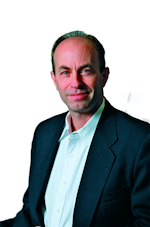Optical clocks and various types of quantum simulators and computers rely on the technology of creating, maintaining, and controlling cold atoms or ions; such applications typically use a system of several highly stable continuous-wave (CW) lasers for trapping and cooling of the atoms. The particular lasers spectroscopically address the respective optical transitions within the atoms or ions. Such complex systems generally imply high demands on the experimental design and the apparatus.
Menlo Systems (Martinsried, Germany) has unveiled its newest complete laser system, FC1500-Quantum, that can be used for a plentitude of different atomic species and scenarios—for example, for strontium lattices or calcium ions. Within three 19-in. racks, all integrated CW lasers are stabilized by use of an optical frequency comb and are coupled to the experiment via optical fibers. A subhertz-linewidth laser, which is stabilized to an ultrahigh-finesse optical cavity, serves as reference for the ultralow-noise frequency comb. The comb transfers the spectral purity of the cavity to all lines of its spectrum, which themselves then serve as reference for all lasers needed. The entire system is controlled via central software.
In the example of a laser system for an optical strontium lattice clock, the cavity-stabilized laser at 1.5 μm wavelength provides a linewidth below 1 Hz, which the optical frequency comb transfers into the entire visible and infrared spectrum. In total, seven CW lasers are stabilized to the narrow comb lines, of which the clock laser at 698 nm is stabilized with subhertz linewidth.
For more info, see www.menlosystems.com and www.frequencycomb.com.

